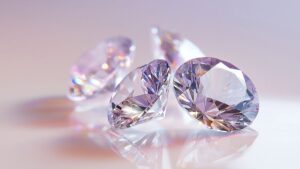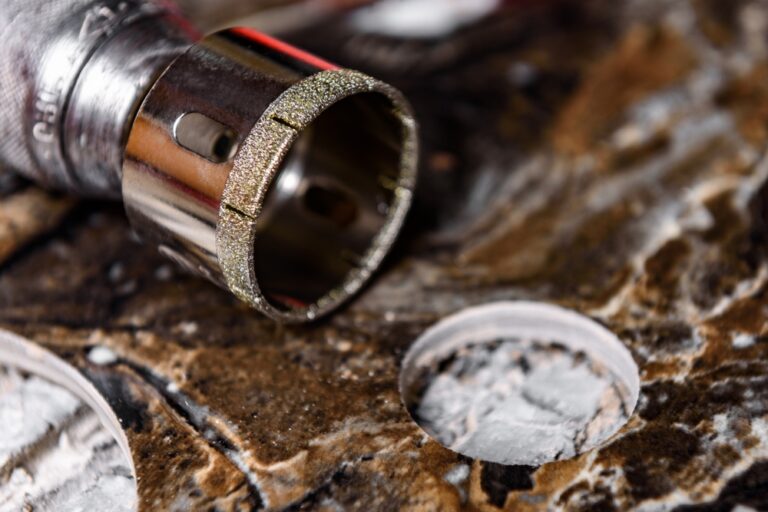Diamond cutting is a meticulous and intricate process that changes raw, unpolished stones into the dazzling gems we see in fine jewelry. This journey from rough rock to a sparkling gemstone involves several key stages, each requiring exactness and expertise. Understanding this process offers insight into the craftsmanship behind one of nature’s most coveted treasures.
The Initial Evaluation
The travel of a diamond begins with the assessment of the harsh stone. This evaluation includes deciding the diamond’s quality, counting its measure, shape, and any incorporations or blemishes.
Talented gemologists utilize different apparatuses and methods to evaluate the unpleasant jewel and choose the most compelling cutting procedure. The objective is to maximize the stone’s potential while minimizing squandering. This arrangement sets the establishment for the consequent cutting process.
Sawing the Rough Stone
Once assessed, the rough diamond is sawn into smaller pieces if vital. This is ordinarily done using a diamond saw or a wire saw equipped with a diamond-coated blade. The sawing process requires immense precision to ensure that the resulting pieces are appropriate for encouraging cutting and cleaning. The use of a Chaser Crack Tool is often employed to help with precise cuts and to handle the intricate details of the sawing process.
Shaping and Performing

After sawing, the diamond undergoes shaping and performing. This stage involves grinding the rough diamond into the desired shape. Different devices, counting diamond-coated wheels, are utilized to make the essential diagram of the gemstone. Amid this handle, the jewel is carefully formed to improve its common properties and guarantee that it will accomplish the ideal brilliance once cut.
Faceting the Diamond
Faceting is the organization where the precious stone genuinely starts to sparkle. Talented cutters utilize accuracy devices to make the different features that provide the jewel its shimmer. Each aspect is carefully calculated to maximize the diamond’s brilliance and fire. This arrangement requires extraordinary aptitude and consideration of detail, as the arrangement and point of each aspect altogether affect the diamond’s general appearance.
Polishing the Gemstone
Once faceted, the precious stone experiences an exhaustive cleaning preparation. This arrangement includes utilizing a turning wheel coated with jewel powder to smooth and refine the surface of the pearl. Cleaning improves the diamond’s clarity and brilliance, expelling any remaining harshness from the cutting and forming stages.
Quality Control and Grading

After cleaning, the jewel is subjected to thorough quality control and evaluation. Gemologists look at the precious stone beneath amplification to survey its cut, clarity, color, and carat weight. This assessment decides the diamond’s quality and esteem, guaranteeing that meets the tall measures required for fine gems. For this case, a 2 carat diamond Ring would be carefully evaluated to affirm its quality and guarantee it meets the details for a high-value piece.
The Role of Technology in Modern Diamond Cutting
Advancements in innovation have revolutionized jewel cutting. Modern instruments and strategies, such as computer-aided planning (CAD) and laser cutting, permit greater accuracy and proficiency. These innovations empower cutters to make perplexing plans and accomplish an unparalleled level of exactness, improving the overall quality of the finished gemstone.
The Art and Craftsmanship of Diamond Cutting
While innovation plays a noteworthy part, the craftsmanship and craftsmanship of precious stone cutting stay basic. Gifted cutters bring a creative touch to the handle, combining their ability with progressed apparatuses to make showstoppers.
The Significance of Diamond Cutting in Jewelry
The handle of precious stone cutting is vital in deciding the last appearance and esteem of a gemstone. Whether it’s a diamond Engagement Ring or a lavish piece of gem, the quality of the cut altogether impacts the gem’s brilliance and charm. Each arrangement of the cutting preparation contributes to the by and large excellence of the wrapped-up item, highlighting the significance of accuracy and skill in making shocking jewelry.
Conclusion: The Journey of a Diamond

Turning an unpleasant jewel into a wrapped-up pearl includes a complex and fastidious handle. From the beginning assessment to the last setting, each arrangement requires ability, accuracy, and imaginativeness. The change from a crude stone to a shimmering diamond is a confirmation of the craftsmanship and innovation that characterize present-day precious stone cutting.
Understanding this not as it were improves appreciation for the excellence of precious stones but moreover underscores the esteem of the ability included in making these uncommon gemstones.
